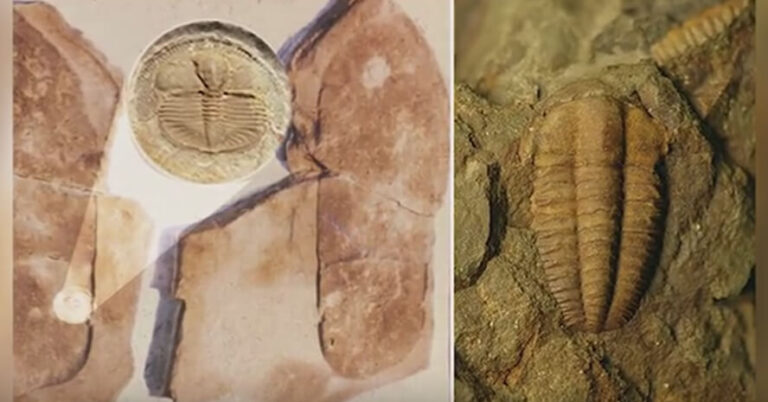Two Discoveries, Two Continents — One Growing Mystery
In just the past year, two astonishing discoveries have quietly reshaped the conversation around our ancient past. On the surface, these finds couldn’t be farther apart: one in the tropical rainforests of Colombia, the other in the shifting sands of Libya. And yet, both point toward something eerily similar — there were once people here, and we don’t know where they came from.
In Colombia, archaeologists uncovered the remains of a human population who lived roughly 6,000 years ago. What makes them extraordinary isn’t the age of the bones, but what the DNA reveals: these people left no genetic footprint. No known descendants. No identified ancestors. It’s as though they appeared, lived out their lives, and vanished into the void of forgotten history.
Thousands of miles away in Libya, the bodies of mummified women tell a different but equally strange story. Genetic analysis of their remains uncovered echoes of a 50,000-year-old ghost lineage — an entirely separate branch of humanity whose traces had been hiding in plain sight. This group left faint signatures in later populations but seems to have disappeared as a distinct people long ago.
Two ancient groups. Two missing branches of the human family tree. And they’re just the latest in a series of unsettling clues that suggest the story of human history may be far messier — and far more fascinating — than we’ve long believed.
Colombia: The People With No Relatives
The Colombian discovery centers on the San Vicente de Chucurí archaeological site. Here, buried beneath dense jungle, researchers unearthed human remains dating back 6,000 years — long before the rise of the Inca, the Maya, or even the earliest complex societies in South America.
When geneticists sequenced DNA from these bones, they expected to find links to known ancient or modern groups — perhaps early waves of Native American settlers or connections to Siberian populations known to have crossed the Bering Land Bridge. Instead, they found something shocking.
The genome of this population simply doesn’t match anything. Even when compared to thousands of ancient and modern genomes in vast international databases, the results came up blank. No distant relatives. No shared ancestors. Their family tree seems to exist on its own, isolated and disconnected from every known human lineage.
In genetic terms, it’s like discovering a long-forgotten island floating alone in the middle of a sea of human history. How they arrived in South America — and where they ultimately went — remains entirely unknown.
Were they part of an undocumented migration? Did they descend from a separate wave of early humans who reached the Americas far earlier than previously believed? Or were they members of a lost civilization whose story simply vanished before any records could be kept?
No one knows.

Libya: A Ghost From 50,000 Years Ago
The Libyan mummies offer a similarly haunting puzzle.
Researchers studying 7,500-year-old remains from Takarkori rock shelter in southwest Libya discovered genetic markers that didn’t fit neatly into the known tree of human ancestry. Instead, these markers traced back to a previously unknown lineage that diverged from modern humans roughly 50,000 years ago — a period when early Homo sapiens were only beginning their expansion across the globe.
Unlike the Colombian population, traces of this lineage do appear faintly in later North African populations. But the original group itself seems to have disappeared as a distinct people long ago — what geneticists refer to as a ghost population.
A ghost population leaves no physical remains we’ve identified — no clear cultural markers, no artifacts definitively tied to them — but shows up as faint echoes in genetic data, hinting at peoples whose existence we would never have suspected without modern technology.
Once again, we are left staring into the unknown. Who were they? What role did they play in early human migrations? Why did their lineage vanish?

Life in Forgotten Worlds
It’s tempting to think of these people as abstract data points. But they weren’t.
In the jungles of ancient Colombia, these humans lived rich, full lives. Their children likely played along rivers shaded by towering trees, gathering fruits we might no longer recognize. They lit fires under starlit skies, surrounded by the sounds of the forest.
In Libya, the world these women inhabited was radically different from the desert we see today. During their lifetimes, the Sahara was in the middle of what scientists call the African Humid Period — a time when monsoons drenched the region, creating vast green savannas dotted with lakes. Herds of gazelle and hippos roamed where sand now lies. The early people of the Sahara likely hunted, gathered, and fished these lush landscapes, their communities thriving in what we might today call a prehistoric paradise.
And yet, for all their years of existence — we know almost nothing about them. No languages survive. No oral histories. Only the smallest fragments remain, locked in their ancient DNA, uncovered thousands of years later.

A Pattern Emerging
When viewed on their own, each of these discoveries feels like a strange exception in the human story. But seen together, they suggest a pattern that’s becoming harder to ignore. Once again, we’re finding signs of ancient human groups that don’t fit into the family tree as we know it — populations who appeared, lived their lives, and vanished, leaving behind almost nothing but scattered genetic clues.
This isn’t the first time science has been faced with something like this. The discovery of Homo floresiensis in 2003 offers a clear example of how complex and unexpected human history can be. At first, the tiny skeletal remains found in Liang Bua cave on the island of Flores in Indonesia caused an uproar. Many researchers doubted they represented a new species at all, arguing instead that they were simply modern humans with genetic disorders or developmental conditions.
For more than a decade, the debate raged. Scientists questioned everything — from the skeletal features to possible errors in dating or excavation. But as more studies were conducted, including advanced CT scans, improved dating methods, and detailed anatomical comparisons, the evidence pointed more and more toward Homo floresiensis being something entirely distinct. By 2016, with new dating pushing the site’s occupation back to at least 100,000 years ago, most of the scientific community had come to accept that these so-called “hobbit humans” were indeed a separate species, likely descended from an even earlier human ancestor like Homo erectus.

The Homo floresiensis Reminder
The story of Homo floresiensis shows just how quickly scientific understanding can shift when new evidence challenges old assumptions. What was once dismissed outright is now taught as fact. And it serves as a reminder when we look at recent discoveries like those in Colombia and Libya. Right now, these finds sit on the edge of mainstream understanding. But as more research is done — as more DNA is sequenced and more sites are excavated — they may very well force us to rewrite our history once again. Just as we eventually had to do with Homo floresiensis.
What More Remains Hidden?
The truth is that we’ve likely only scratched the surface of these lost stories. Entire civilizations may have risen and fallen before the first cuneiform tablet was ever pressed or the first stone pyramid was ever built.
Some may lie beneath jungle canopies, others under desert sands, or submerged beneath ancient coastlines lost to rising seas.
And yet, these people walked the same earth we do. They stood under the same sun. They stared up at the same moon. Their children laughed and played. They hunted, loved, suffered, and died — just as we do — before vanishing into the blind spots of history. It’s hard not to wonder how many other lost peoples once lived here — entire groups we’ve yet to discover, their stories still hidden beneath the surface.




